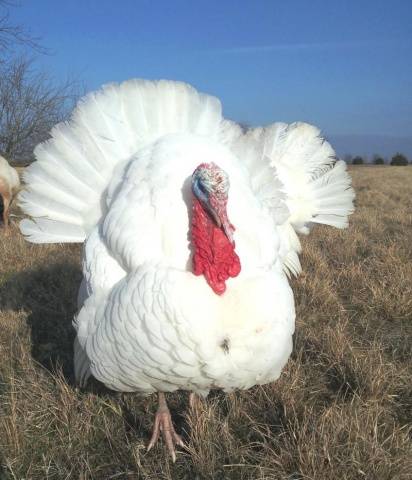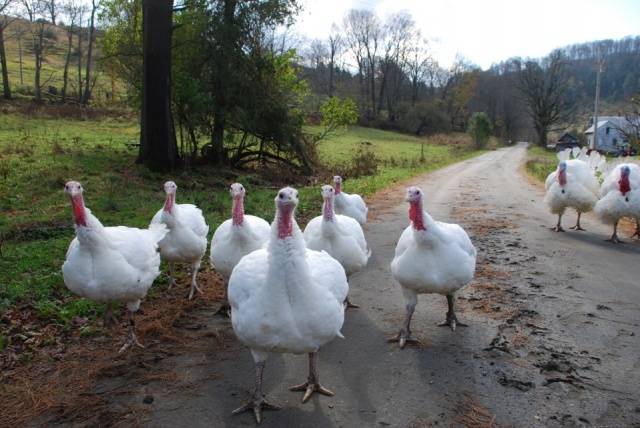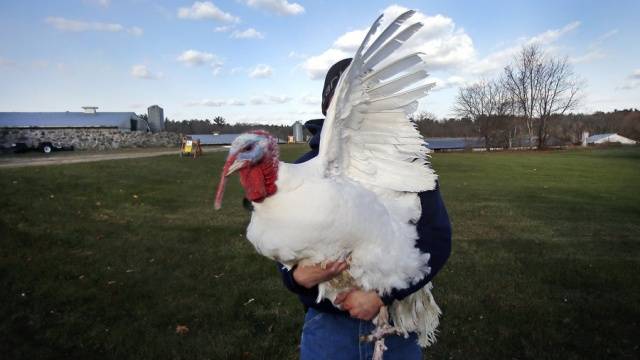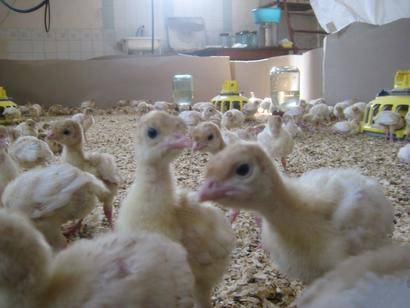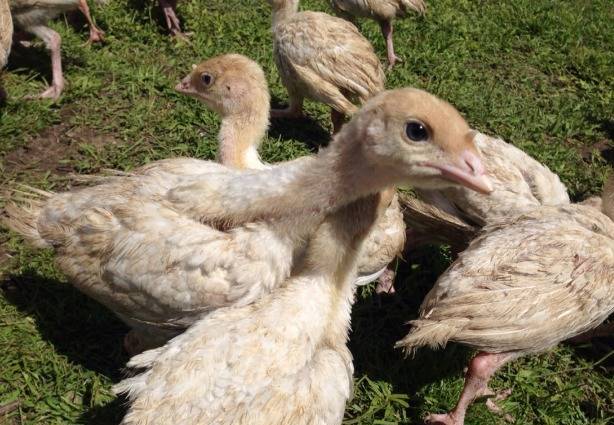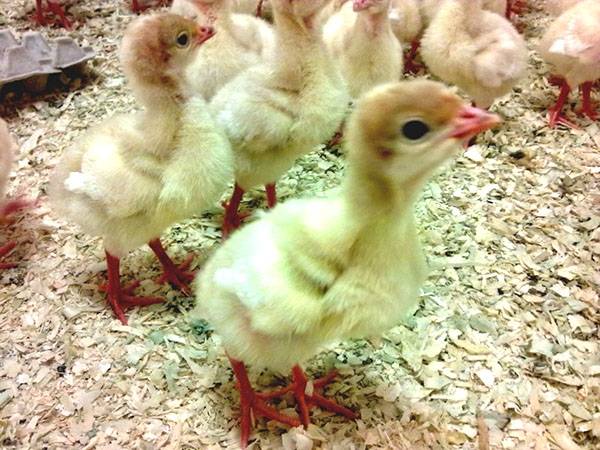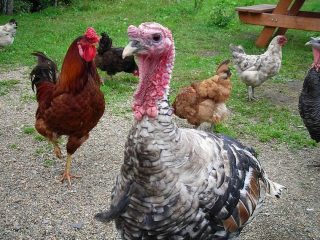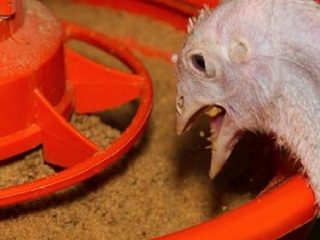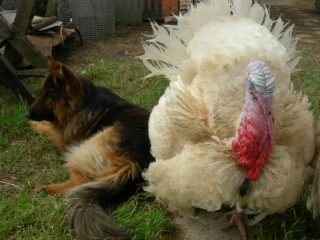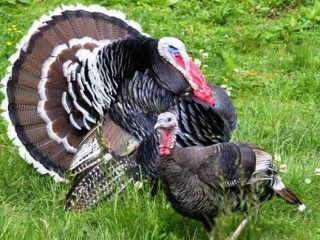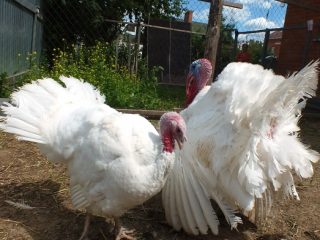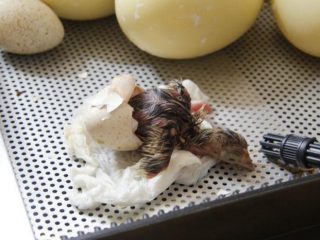Content
Among broiler turkeys The top breed in the world is held by the meat cross from British United Turkeys at number 6.
Turkey breed Big 6 is still winning the battle with other, later crosses of broiler turkeys. When comparing the Big 6 with the Euro FP Hybrid, it turned out that the females and males of the Big 6 BYT gained a higher live weight than the Hybrid turkeys. There was no significant difference in feed conversion between males of either breed, but Big 6 turkeys showed a significantly lower conversion rate than Hybrid turkeys.
The slaughter yield of meat between turkey breeds differed slightly, but when slaughtered after 147 days of the fattening period, Hybrid males gave a greater yield of white meat than Big 6 turkeys.
In meat quality, no significant differences were observed between these broiler breeds.
After this study, it was concluded that the Euro FP Hybrid has not yet reached the performance level of BYT Big 6 and cannot be recommended as a replacement for Big 6.
Description of the Big 6 cross
Big 6 is a heavy cross of broiler turkeys. Males gain weight up to 25 kg, turkeys up to 11.Turkeys have white plumage, which is more profitable when selling products due to the fact that white stumps are not visible in light skin.
Big 6 turkeys grow very quickly, gaining 4.5 kg at three months of age; by six months the turkeys are fully grown and growth stops. Further weight gain occurs due to fat deposits.
The slaughter yield of meat from a Big 6 turkey carcass is 80%. The elegant bones often cannot withstand such body weight and broiler turkeys begin to have bone problems.
Research by the American Poultry Association has shown that as a result of breeding such massive individuals, hereditary diseases have accumulated in the genotype of broiler turkeys and now broiler turkeys suffer not only from bone diseases, but also from diseases of the cardiovascular system (too much weight is harmful not only to humans). In addition, Big 6 broiler turkeys have reduced immunity to pathogenic microorganisms, which is the reason for poultry farmers’ confidence in the “capriciousness and delicacy” of Big 6 broiler turkeys.
Due to hereditary diseases, turkey meat producers suffer heavy losses. These problems cannot be solved by conventional breeding, so work is underway to decipher the turkey genome. Deciphering the turkey genome and using the genetic information from birds resistant to salmonellosis, influenza and E. coli should allow us to raise healthier birds. And genophobes will be deprived of dietary turkey meat.
Genetic information can also be used to strengthen skeletal bones, which today are deformed under the rapidly growing muscle mass of the Big 6 broiler cross, not keeping pace with muscle growth.
But solving these problems will take many more years, but for now farmers will have to work with what they have and try to optimize the content of Big 6.
How to raise Big 6 turkeys on a private backyard
A Big 6 turkey can lay up to 100 eggs per year. This is a good result, considering that the hatchability rates of turkey poults are quite high.
There are two directly opposing opinions regarding the breeding of Big 6 in private backyards. Some believe that it is better to cross a heavy-line turkey with a lighter male, because they believe that a nearly 30-pound broiler turkey will harm a much lighter turkey. In this case, the resulting turkeys are not the largest. But they also eat less during the fattening process.
The second way is to obtain turkey poults with large muscle mass by crossing a light line turkey with a heavy broiler male. In this case, already at 4 months, a broiler turkey can have a live weight of up to 14 kg, a slaughter weight of 70% of live weight and carcass safety of 95%. For 1 kg of weight, 2 kg of feed is consumed.
Raising turkey poults
One-day-old turkey poults are kept in a brooder at a temperature of 30°C. The best option when growing BYuT broiler crosses is to use starter feed for broiler chickens.
As the turkeys fledge, the temperature in the brooder is lowered. Contrary to the belief that broilers love warmth and should be kept at high air temperatures, in fact, the optimal temperature for already fledged turkey poults will be 20-25 ° C.At temperatures above 35°C, the growth of broilers slows down and they may even die from heat stroke. This is due to the fact that with rapid growth, turkey poults have an accelerated metabolism, and with an accelerated metabolism, the turkey body produces a lot of heat. If this heat still has nowhere to go, since the air temperature is almost equal to the turkey’s body temperature, then this is where the problems begin. The bird does not know how to sweat, and thermoregulation through an open beak is not enough for it.
Grown-up turkey poults are transferred to an aviary content. They are kept, like adult turkeys, on the floor. To prevent skeletal problems, turkey poults need plenty of space to roam. The only way today to somehow strengthen bones and ligaments that cannot keep up with the growth of muscle mass is to walk as long as possible. Most likely, this will not save all the turkey poults, but it will reduce the number of cripples as much as possible.
If there is a cow in the farmstead, owners often cannot look at milk, cottage cheese and other dairy products, giving them to poultry. “Eat the cottage cheese, daughter, eat it, throw the chickens away anyway” - a real replica of a village housewife who did not have the opportunity to sell milk. Chickens may not appreciate such care, but broiler turkeys will respond well to food rich in protein and calcium.
Grown-up turkey poults can begin to be given wet mash of bran and derti mixed with whey or milk. You can also mix cottage cheese there. You just need to make sure that the given portion is eaten within 15 minutes, especially if it happens in the summer. And wash the feeders thoroughly after such a mash, since dairy products spoil very quickly in the heat.
Turkeys should always have water.To prevent it from turning sour, after the turkeys rinse their beaks in it after feeding, it must be changed twice a day. At the same time, you need to make sure that the turkeys do not spill the water. They will not swim like ducks, but they can knock over a container of water by stepping on it. Dampness is contraindicated for turkeys, so drinkers must either be closed or the possibility of them overturning must be prevented.
A turkey house for birds of any age should have shell rock and coarse sand. Small pebbles help turkeys, like any bird, digest tough grains.
Sawdust or straw is used for bedding in the turkey house. It needs to be changed twice a week. The thickness of the bedding should be sufficient so that the turkey, even having dug a hole for himself to sleep, does not reach the cold floor. But you shouldn’t make it too thick either, since too thick a layer of bedding will increase the cost of keeping turkeys.
The turkey poultry room should be well ventilated so that condensation does not form on the walls.
When keeping turkeys to obtain hatching eggs, it is necessary to provide them with long daylight hours using fluorescent lamps.
How to prepare feed yourself
The situation when special feed for broiler turkeys cannot be obtained due to the remoteness of the settlement or lack of finance is quite real in the Russian open spaces. In this case, you can prepare feed for broiler turkeys yourself.
Theoretically, you can simply mix all the components, but you must take into account that whole grains are poorly digestible, so it is better to grind them in a grain crusher. As a rule, farmers very quickly acquire this useful device.
To prepare feed you need:
- wheat – ⅓ of the total volume of planned feed:
- corn and soybeans - ⅕ of the volume each;
- vitamin-mineral premix – 0.15 of the total volume
- fishmeal – 1/10 part;
- shell rock;
- ground eggshells.
Chalk should be given very carefully, or you can get by with shell rock and shells, since chalk can stick together into lumps and clog the intestines.
When replacing wheat with barley, the turkey will gain weight faster, but can lead to obesity.
How much does it cost to raise BIG-6 turkeys in rubles?
